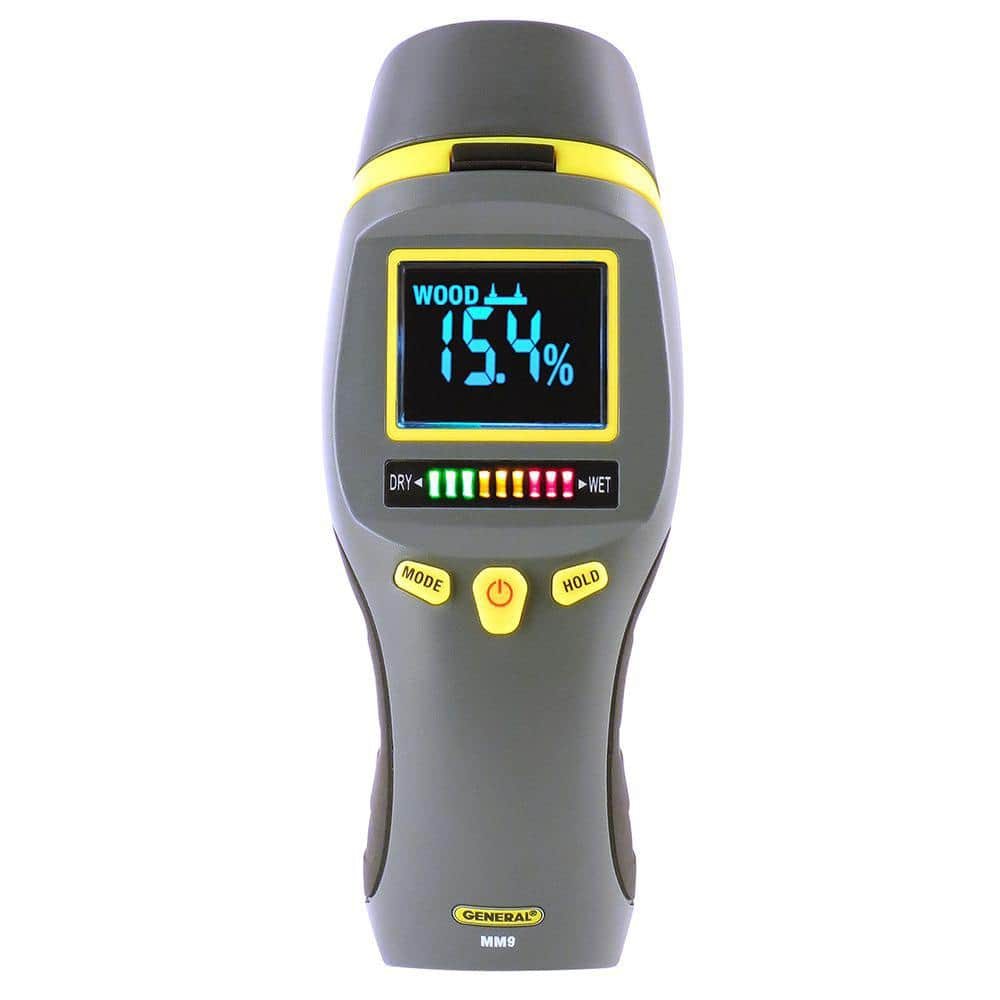Recognizing the Significance of a Wetness Meter in Stopping Mold and Water Damage in your house
In the realm of home upkeep, the existence of wetness can commonly be a silent yet awesome opponent, capable of creating pervasive mold and mildew growth and perilous water damages if left untreated. Amidst the peaceful atmosphere of a house, concealed dampness problems can brew underneath the surface, posing a risk to both residential or commercial property and wellness. However, equipped with the right tools and knowledge, property owners can proactively combat these possible threats. Understanding the significance of a dampness meter in this fight is not simply an alternative yet a calculated requirement.

Significance of Moisture Detection
Efficient wetness discovery approaches are vital for safeguarding homes and protecting against potential mold growth and water damage. Wetness can leak into various structure materials, causing structural concerns and wellness dangers - Moisture Meter. By utilizing a moisture meter, home proprietors can proactively recognize locations vulnerable to excess moisture, permitting prompt intervention and reduction strategies
Moisture meters provide exact readings of wetness levels in different materials such as timber, concrete, and drywall. This information helps in determining locations of issue, also in covert or hard-to-reach areas. Early detection of wetness build-up enables punctual fixings or adjustments to stop more damages.

How Moisture Meters Work
Moisture meters play a critical role in the aggressive identification of excess dampness, aiding in the avoidance of possible mold development and water damages by providing exact readings of moisture levels in numerous structure products. These devices work based upon various concepts, depending on their type. Pin-type dampness meters, as an example, have 2 pins that penetrate the product to determine the electrical resistance between them. When wetness is present, it boosts the material's conductivity, causing a lower resistance reading. Pinless dampness meters, on the various other hand, usage electromagnetic sensors to check the material without triggering damages. These sensing units give off electromagnetic signals that pass through the product and determine the dielectric properties, showing dampness content. Some advanced moisture meters pin both incorporate and pinless innovations for thorough wetness discovery. Comprehending exactly how moisture meters feature is important for prompt and precise moisture level evaluations, enabling reliable preventative measures versus mold and water damages.
Detecting Early Warning Indications
Upon preliminary evaluation of a residential property, identifying refined indicators of excess wetness becomes important in the very early discovery of possible mold and mildew growth and water damage. Water stains can signal leakages or infiltration, while peeling off paint or wallpaper may be an outcome of dampness moved here endangering the bond of these materials to the surface area. In addition, an increase in allergic reaction signs or respiratory problems amongst owners may suggest the existence of mold and mildew due to excess dampness.


Protecting Against Mold And Mildew Development
Identifying very early warning indications of excess moisture within a building not just makes it possible for prompt detection of prospective mold development and water damages yet additionally offers as a positive step in preventing the expansion of mold. To efficiently protect against mold growth, it is important to attend to any kind of resources of dampness promptly.
In enhancement to resolving moisture sources, maintaining interior humidity levels listed below 60% can considerably prevent mold and mildew development. Appropriate ventilation, sufficient insulation, and utilizing air conditioning unit or followers can help control interior humidity degrees. Keeping an eye on dampness levels in areas vulnerable to dampness, such as basements and creep spaces, making use of a moisture meter can additionally aid in early detection of elevated wetness degrees and potential mold development. By taking positive actions to stop excess moisture and mold growth, homeowners can safeguard their building and interior air top quality.
Advantages of Routine Surveillance
Normal surveillance of wetness degrees in a building can play a crucial function in maintaining a healthy indoor environment and stopping prospective mold and mildew and water damages. By consistently examining wetness degrees, house owners can identify any kind of issues quickly and take required actions to prevent mold growth and water damages.
Moreover, normal surveillance allows property owners to track patterns and patterns in moisture levels over time. By establishing a standard and monitoring changes, people can determine any type of areas of concern or potential vulnerabilities in the home's structure. This data-driven strategy allows targeted treatments and maintenance initiatives to address underlying problems prior to they intensify into more substantial troubles. Eventually, the constant surveillance of wetness levels empowers property owners to safeguard their building, guard their health, and preserve the integrity of their indoor environment.
Final Thought
In verdict, the use of a moisture meter click here for more info is crucial in protecting against learn the facts here now mold and mildew and water damages in homes. By spotting very early warning indications of dampness, home owners can take positive steps to prevent mold and mildew growth and expensive repairs.
By using a dampness meter, property owners can proactively determine areas vulnerable to excess dampness, permitting for prompt intervention and mitigation methods.
Wetness meters offer precise readings of wetness levels in different products such as timber, concrete, and drywall.Moisture meters play a critical duty in the positive recognition of excess moisture, helping in the prevention of potential mold and mildew development and water damages by providing accurate analyses of moisture degrees in various structure materials. Understanding exactly how moisture meters feature is essential for timely and exact dampness degree evaluations, making it possible for effective preventive measures against mold and water damages.
Monitoring dampness degrees in areas susceptible to wetness, such as basements and creep spaces, utilizing a wetness meter can also assist in early detection of elevated dampness degrees and potential mold development.